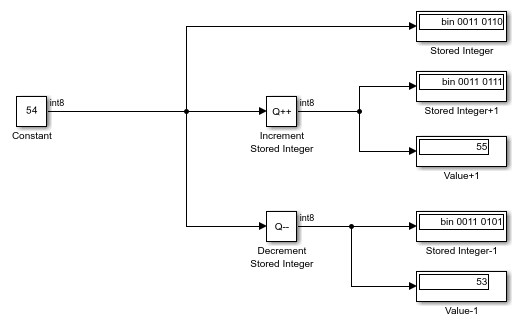Increment Stored Integer
신호의 저장된 정수 값을 1씩 늘리기
라이브러리:
Simulink /
Additional Math & Discrete /
Additional Math: Increment - Decrement
HDL Coder /
Math Operations
설명
Increment Stored Integer 블록은 신호의 저장된 정수 값을 1씩 늘립니다.
부동소수점 신호도 1씩 늘어나고 오버플로는 항상 래핑됩니다.
예제
포트
입력
출력
블록 특성
데이터형 |
|
직접 피드스루 |
|
다차원 신호 |
|
가변 크기 신호 |
|
영점교차 검출 |
|
확장 기능
버전 내역
R2006a 이전에 개발됨
